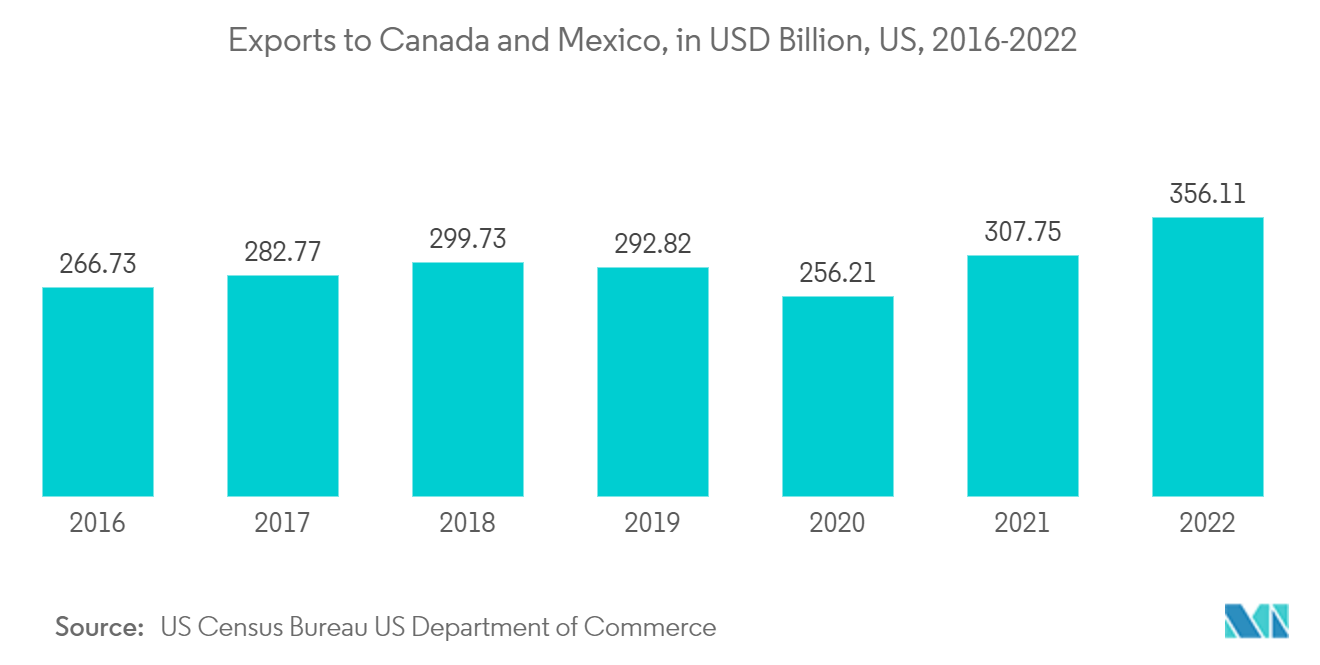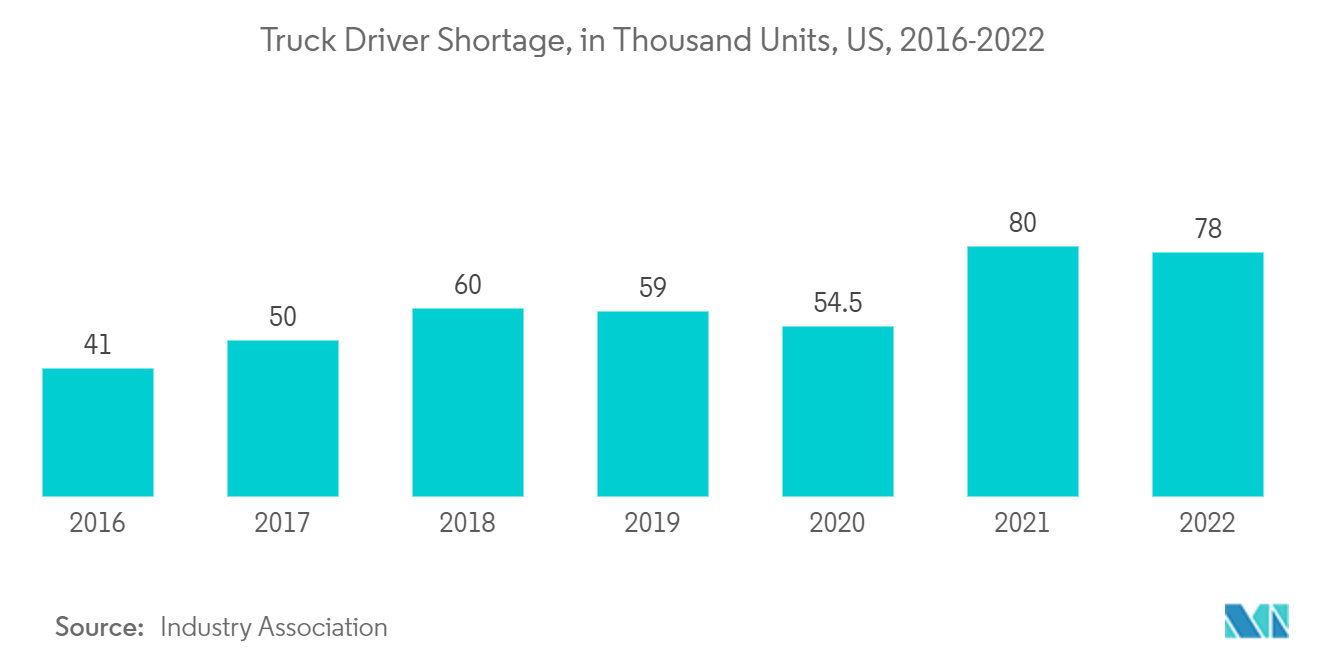Market Trends of US Cross-Border Road Freight Transport Industry
This section covers the major market trends shaping the US Cross-Border Road Freight Transport Market according to our research experts:
Free Trade Agreements (FTAs) Facilitating the Growth of the Market
The U.S. has 14 FTAs with 20 countries which comprise about 40 percent of U.S. goods' exports. U.S. Free Trade Agreement (FTA) partner countries provide greater market access through reduced or eliminated tariffs, intellectual property protection, and elimination of non-tariff barriers among other provisions. The United States has FTAs with Australia, Bahrain, Chile, Colombia, Israel, Oman, Panama, Canada, Mexico, etc. The Agreement between the United States of America, the United Mexican States, and Canada (USMCA) is a free trade agreement between Canada, Mexico, and the United States. It replaced the North American Free Trade Agreement (NAFTA) implemented in 1994 and is sometimes characterized as "NAFTA 2.0", or "New NAFTA' since it largely maintains or updates the provisions of its predecessor. USMCA created one of the world's largest free trade zones, spanning roughly 500 million people and totaling over USD 26 trillion in GDP (PPP). Canada and Mexico remain the top trading partners to the United States with China not far behind.
From NAFTA's entry into force in 1994 to 2020, the year NAFTA was replaced by the USMCA, U.S. trade of goods with Mexico and Canada increased from USD 343.1 billion to USD 1 trillion, despite some setbacks. Since the USMCA entered into force on July 1, 2020, trade has been consistent with that set by NAFTA. In 2021, trade flows in North America reached USD 1.3 trillion, and in 2022 was at the same pace. From January to May 2022, trade in the region reached USD 642.6 billion, which compared with the same period in 2021 (i.e., USD 521.8 billion) representing a 23.15% increase. Canada and the U.S. share a land border close to 9,000 km long, which is the longest border in the world. The two countries cooperate closely to manage the secure and efficient flow of goods and people across the border which is vital to both countries' economic competitiveness and prosperity. Canada and the U.S. share one of the largest trading relationships in the world. The US exported over USD 366.11 billion worth of goods to Canada in 2022 up 19% from USD 307.75 billion in 2021. Thus, the presence of FTAs like USMCA will continue to facilitate the trade between US and its neighbouring countries, supporting the market growth.

Driver Shortages May Create Challenge for the Market
The American Trucking Association (ATA) reported a shortage of 80,000 drivers in 2021, an all-time high that could reach 160,000 by 2030. The high average age of drivers, leading to significant numbers of retirements; the industry's failure to recruit more women, who make up just 8% of drivers, compared to 47% of the overall workforce; lifestyle disadvantages of long-haul trucking; inability to pass drug tests; and inadequate truck parking are among the primary contributors of the shortage. The truck driver shortage eased slightly in 2022, after more than 90% of carriers raised pay in 2021. Raising driver pay has somewhat helped in adding drivers. Truckload fleets doled out an average raise of 10.9%, according to the 2022 ATA Driver's Compensation Study. But the industry still faces its second-largest number of vacancies on record. The improvement is expected to be temporary, given that an aging workforce and freight demand are both projected to grow. The shortage projection is expected to grow over the next decade.
Despite the shrinking number of overall driver vacancies, carriers again ranked driver shortage and driver retention as their top concerns in trucking, according to the American Transportation Research Institute's 2022 Critical Issues in the Trucking Industry report. Carriers in neighboring countries are struggling with similar challenges in recruiting and retaining drivers. Canada, whose trucking industry is a fraction of the size of the U.S., allows 18-year-olds to haul freight. But the country is still confronting a shortage of 20,000 drivers that is projected to grow to 55,000 by 2024. Mexico's truck fleets face a similar challenge. The country was short 54,000 drivers in 2021. The supply chain is majorly affected by the shortage of drivers in the trucking industry. This results in a lack of goods, delays, and higher costs. Thus, these driver shortages in the US and its neighboring countries may create challenges for the market. According to ATA, the industry must recruit nearly 1.2 million drivers over the next 10 years to replace drivers leaving voluntarily or involuntarily and avoid the driver shortage ballooning to more than 160,000 in 2030.


